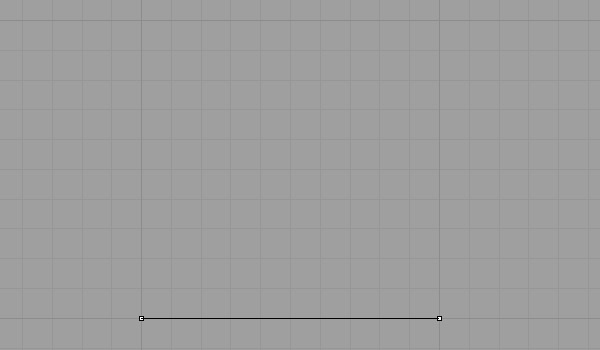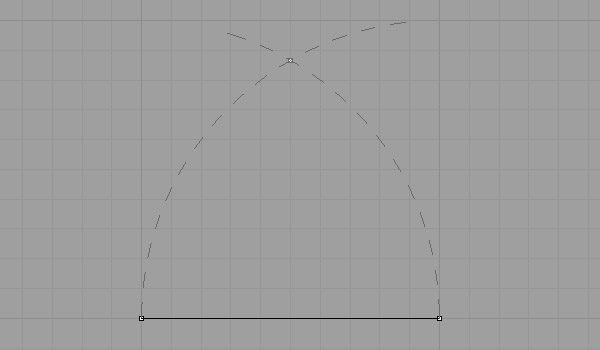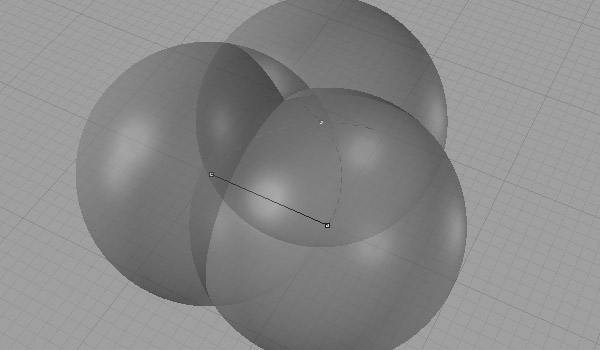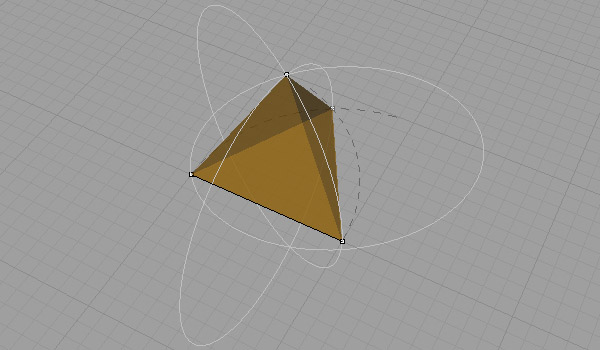Construction of Tetrahedron
The tetrahedron is a platonic solid with four equal triangular faces (equilateral), six equal edges, and four vertices. In the construction of a tetrahedron, we will look closer at length transfers using compass-like tools in two- and three-dimensional space. To define the edge length of the first triangle, start with any two points in Cartesian space. Using a compass (arc or circle), draw two arches (or circles) using your initial points as corners and the distance between your points as radius. Now, you’ve found the third corner of your equilateral triangle at the intersection of these arches.


This time, do the same thing in three dimensions. When constructing a tetrahedron, imagine the fourth and last corner point of the tetrahedron above your triangle. As all faces of the tetrahedron are equilateral triangles, this point has to be at the same radius distance you’ve determined above. However, you’ll use a three-dimensional compass (or a sphere) to transfer this distance. This will help you find the intersection of equal distances to these three corners. If you intersect only two spheres, you’ll find a circle. This means the fourth point you are looking for lies in this circle. You need the third sphere to intersect with the circle to find the exact location of the fourth corner. Finally, the triangular faces resulting from the tetrahedron’s construction are created using these four corner points.



You can rebuild the model by following the tetrahedron construction tutorial above. There is a video version here, also. If you want to support this website, would you consider being my Patreon? The link to my Patreon page includes the Rhino models and Grasshopper definitions I made since 2011.








